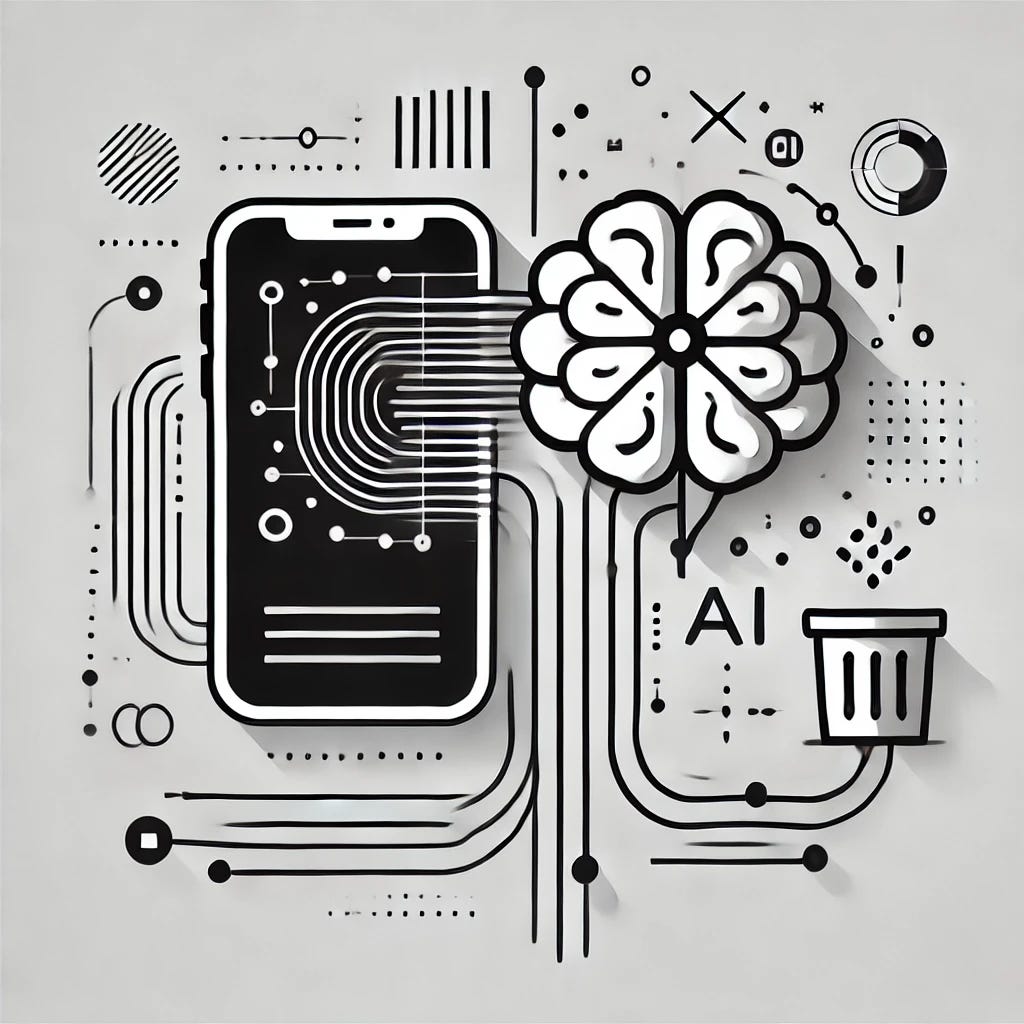Crafting a GenAI Strategy that sets your product apart
Follow these guidelines to ensure your Generative AI investments generate durable competitive advantage for your product.
A question I am increasingly getting from my consulting clients is: “How do I go about setting a clear strategy for Gen AI that pays off?”. People are increasingly realizing that simply integrating GenAI into our products isn't enough. The real challenge—and opportunity—lies in leveraging GenAI’s potential to create a durable competitive advantage. However, many product leaders fall into common pitfalls that undermine their efforts. In this post, we’ll look at these pitfalls and outline the right approach to crafting a Gen AI strategy for your product with plenty of examples.
Common pitfalls in implementing GenAI features
Adding AI for the Sake of AI: Simply slapping "AI-powered" onto your product without a clear purpose dilutes its value. Features that don’t address real customer pain points often confuse users rather than delight them.
Focusing Solely on Competitor Parity: Building features just to "keep up" with competitors can lead to undifferentiated solutions that fail to stand out in the market.
Ignoring Data Quality: AI solutions are only as good as the data they’re built on. Poor data quality leads to irrelevant insights and frustrated users.
Underestimating User Experience: Overly complex AI features that are hard to use can alienate customers, making them less likely to adopt or appreciate the technology.
Instead of falling into these traps, focus on building AI features that solve meaningful problems, leverage your unique strengths, and enhance user productivity. Here’s how to do it right:
1. Embrace First Principles Thinking
To build lasting differentiation with GenAI, start by fundamentally reimagining the problem statement. Challenge existing paradigms and explore disruptive solutions that could even outpace your current product. This first-principles approach can open up avenues to solve problems in entirely new ways.
Examples:
Stock Photography: Companies like Getty Images traditionally rely on massive libraries of stock photos. With GenAI, they can shift to generating high-quality, unique images based on user prompts, eliminating the need for static photo libraries.
Content Creation Products: Canva, known for its template-based designs, can now empower users to create customized templates through text prompts, enabling hyper-personalized templates, instead of having users choose from existing templates.
Research Products: A company like Gartner can use GenAI to predict future technology trends by analyzing the improvement rates of patents, such as GetFocus does, offering actionable foresight to their clients. This is different from its traditional approach of providing research articles.
By using first principles to solve your customers’ core challenges with GenAI, you can enhance your product’s value and leapfrog competitors.
2. Leverage Your Own Data to Deliver Insights
If your product generates significant data for users, GenAI can transform this raw information into actionable insights. Summarizing vast troves of data, highlighting key patterns, or offering predictive analytics are just some ways to create exceptional value.
Why It Matters:
Investing in analytics and data gathering pays off in a GenAI-driven world. Your proprietary data becomes a powerful differentiator, enabling you to:
Provide personalized summaries and insights.
Highlight trends that your users might miss.
Make data-driven recommendations at scale.
Example:
If your product provides analytics dashboards, use GenAI to summarize essential insights directly on the home screen. For instance, rather than showing raw data, a generative AI-powered dashboard could say:
"Sales increased 15% this quarter, driven by a 25% rise in conversions in the Asia-Pacific region."
This not only delights users but also positions your product as a must-have for decision-making.
3. Offer AI Agents in your product
AI agents—autonomous tools designed to perform specific tasks—can dramatically improve user efficiency and satisfaction. They automate workflows and enhance user productivity. For instance, in B2B software, an AI agent might automate lead scoring by analyzing customer behavior and engagement data, helping sales teams focus on the most promising opportunities. By automating repetitive tasks, you not only reduce user effort but also justify premium pricing for your product.
How to Leverage AI Agents:
Identify repetitive actions your customers perform and design AI agents that can:
Mimic user behavior.
Learn from historical patterns.
Automate routine tasks with minimal input.
Example:
In Sales Lead Management software, allow users to build custom AI agents to handle repetitive actions, such as:
Categorizing and prioritizing incoming leads.
Sending follow-up emails based on predefined templates.
Automatically flagging high-priority leads based on historical success rates.
Salesforce exemplifies this with its "AgentForce" offering, enabling customers to build AI-powered workflows tailored to their needs.
Final Thoughts
To ensure your product’s GenAI features offer durable competitive advantage:
Think Differently: Use first principles thinking to disrupt your industry’s status quo.
Harness Data: Transform your proprietary data into insights that create unparalleled user value.
Automate Smartly: Introduce AI agents that elevate productivity and simplify complex workflows.
By embedding these strategies into your product roadmap, you can position your company as an industry leader and capture long-term customer loyalty.
About the Author
Teja Vepakomma is a Product Strategy and Growth consultant to companies. He has many years of experience working in Product Management leadership roles in Global SAAS companies. He’s currently based in Bangalore, India.


